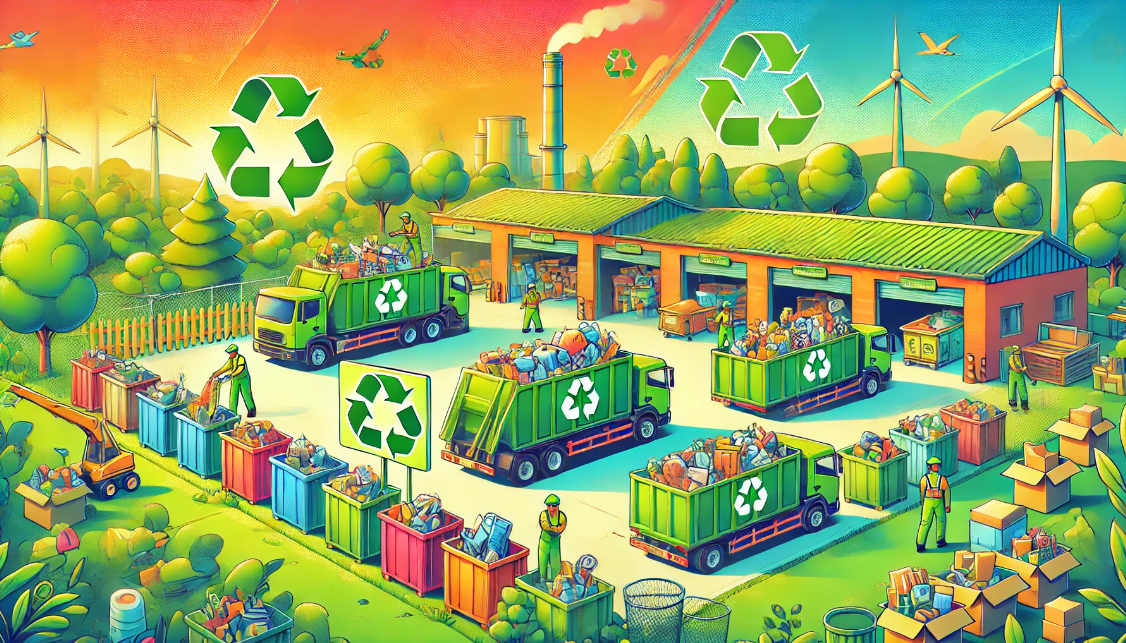
Eco-Friendly Junk Disposal: Simple Ways to Declutter Sustainably
Clearing out clutter is one thing; doing it sustainably is another. In today’s world, where landfills overflow and recycling programs are more important than ever, finding eco-friendly ways to dispose of junk can make a real difference. Whether you’re getting rid of old furniture, electronics, or random clutter, this guide will help you discover eco-friendly junk disposal methods that keep waste out of landfills and put your unwanted items to better use.
Why Eco-Friendly Junk Disposal Matters
Eco-friendly junk disposal is all about making mindful choices when you clear out your space. Here’s why it matters:
- Reduces Landfill Waste: By recycling and repurposing items, you minimize the amount of junk that ends up in landfills.
- Saves Natural Resources: Recycling items like electronics and metals can save precious natural resources by reducing the need for raw materials.
- Supports Local Communities: Donations help charities and people in need, giving items a second life.
A little effort goes a long way. Even if you’re tackling a big cleanout, eco-friendly junk disposal can help you keep your carbon footprint small.
Common Challenges with Eco-Friendly Junk Disposal
While the benefits are clear, there are a few challenges people often face:
- Limited Recycling Facilities: Not all areas have recycling centers that accept all types of items, like electronics or large furniture.
- Time and Effort: Sorting, hauling, and delivering items to multiple locations takes time, and it can be tempting to just “throw it all out.”
- Lack of Awareness: Many people aren’t aware of their eco-friendly options or don’t know where to start.
Fortunately, there are easy ways to overcome these hurdles and make eco-friendly junk disposal part of your routine.
Eco-Friendly Junk Disposal Methods
1. Recycling Centers
- Many items we consider “junk” can actually be recycled, including electronics, metals, plastics, and paper. Electronics contain valuable metals and hazardous materials that shouldn’t end up in landfills.
- Tip: Search online for local recycling centers and confirm what types of items they accept. Some even offer curbside pickup for electronics and appliances.
2. Donation Centers
- Items that are still in usable condition can often be donated. Many charities and thrift stores accept furniture, clothing, toys, and appliances. Not only does this keep items out of landfills, but it also helps people in need.
- Tip: Before donating, check with the organization to ensure they’re accepting donations and to learn about any specific requirements (e.g., furniture condition, appliance age).
3. Upcycling and Repurposing
- Upcycling is a great way to breathe new life into old items. For instance, you can transform an old dresser into a unique storage cabinet or use wood from furniture for DIY projects.
- Tip: Not feeling crafty? Look for local upcycling groups or artisans who might be interested in taking items off your hands.
4. Composting
- If your junk includes organic waste, consider composting. Kitchen scraps, yard waste, and even paper products can be composted, turning waste into valuable fertilizer for your garden.
- Tip: Many cities offer composting programs or provide information on how to start your own compost pile at home.
5. Eco-Friendly Junk Removal Services
- Some junk removal companies specialize in eco-friendly practices, ensuring items are recycled, donated, or disposed of responsibly. They handle the heavy lifting and sorting, saving you time.
- Tip: Look for companies that explicitly mention eco-friendly or green practices on their website. They often work with local donation centers and recycling facilities to minimize landfill impact.
Types of Eco-Friendly Junk Disposal
Each type of junk requires a different approach. Here’s a breakdown of the main eco-friendly junk disposal methods for various items:
| Disposal Type | Best for | Pros | Cons |
|---|---|---|---|
| Recycling Centers | Electronics, metals, paper | Environmentally responsible | Limited item acceptance |
| Donation Centers | Furniture, clothing, toys | Helps the community, free disposal | Only accepts gently used items |
| Upcycling & Repurposing | Furniture, containers | Creative, sustainable | Requires time and DIY skills |
| Composting | Organic waste | Reduces landfill waste, free | Limited to biodegradable items |
| Eco-Friendly Junk Removal Services | All types of junk | Convenient, handles all logistics | Some fees involved |
Tips for Sustainable Decluttering
Organize and Sort Items
- Before discarding, sort items into categories: Donate, Recycle, Repurpose, and Dispose. This makes the process of eco-friendly disposal easier.
Start with Small Projects
- Tackling an entire garage or basement might feel overwhelming. Start with smaller areas, like a single closet or a few shelves, to build momentum.
Get Creative with Repurposing
- Items like glass jars, old T-shirts, and wooden furniture can often be repurposed. Old T-shirts make great rags, and glass jars can be used for storage.
Host a Garage Sale or Swap Event
- If you have items that others might want, consider hosting a garage sale or swap event. It’s a fun way to rehome items while making a little cash or exchanging for something useful.
Use Online Platforms to Give Away Items
- Websites and apps like Freecycle, Craigslist, and Facebook Marketplace allow you to give away items for free, helping them find a new home instead of going to waste.
Frequently Asked Questions (FAQs)
Q: What’s the most eco-friendly way to get rid of electronics?
- The best way is to take electronics to a certified e-waste recycling center. Many centers accept items like TVs, laptops, and phones for free, as they contain metals that can be recycled.
Q: Can I recycle old furniture?
- Some furniture items can be recycled, especially if they’re made of metal or wood. Otherwise, consider donating or repurposing them.
Q: How do I find eco-friendly junk removal services?
- Look for junk removal companies that mention “eco-friendly” or “green” practices. Check their website or call to ask about how they dispose of items.
Q: What can be composted?
- Organic materials like vegetable scraps, coffee grounds, yard trimmings, and paper can all be composted. Avoid composting meat, dairy, and oily foods as they can attract pests.
Q: Are there any costs for eco-friendly junk removal?
- Some companies charge a fee, but many offer competitive pricing and transparent rates. Ask for a quote and clarify if there are extra charges for recycling or donation.
Phone
Contact us
If you have any questions or need any assistance after business hours, please get in touch.
Business Hours
- Mon - Fri
- -
- Sat - Sun
- Closed

Contact Us
We will get back to you as soon as possible.
Please try again later.
All Rights Reserved | Drouco Waste